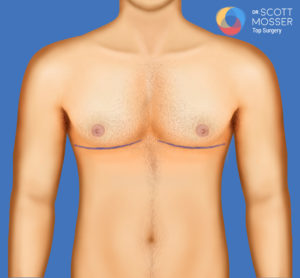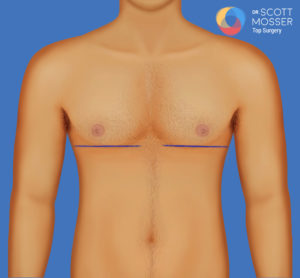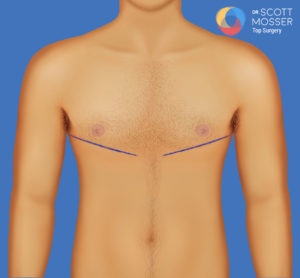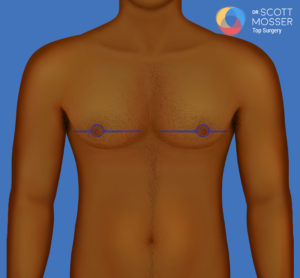Chest Reconstruction Top Surgery Incisions and Chest Contouring
This content will compare different top surgery incisions and chest contouring techniques. These are procedure types that may fit the goals of some transgender, non-binary, and gender-expansive individuals. It is important to note that though certain incisions and other surgical options may be more associated with a binary-appearing chest or not, the type of procedure is not dependent on gender but on what the patient prefers for their own body. If you’re generally unfamiliar with what it means to be non-binary or haven’t heard of gender neutral chest reconstruction top surgery as a viable option, please read the introduction to non-binary top surgery so you can get the most out of the content below.
Incisions: Shape and Location
Incisions
If a patient desires a more traditional chest reconstruction top surgery outcome, there are certain shapes of incisions that could achieve this listed below:
- Very gently curved incision that runs as close to as possible along the lower border of the pectoralis major muscle
Curved incision example
- Straight incision lines instead of curved lines
Straight incision example
- Diagonal incision which runs upward along the outer border of the pectoralis major muscle up and toward the armpit. This is not a very common request at our practice, but is an option if desired.
Diagonal incision example
Less Common Chest Incisions
Below are a few incisions requests we’ve received from patients who are interested in having less common types of incisions:
- Longer, higher, or lower than the position described above
- Incision not located anywhere close to the lower pectoralis major muscle line because of the perception that that is a distinctly male appearance for a mark that is on the chest
It’s important to note that the fish mouth procedure results in an incision across the very center of the chest horizontally.
Fish Mouth incision example
Areolar excision top surgery results in two horizontal scars about three times the length of the previous areola in the center of the chest. This procedure is ideal for patients who would also qualify for keyhole or periareolar incisions but do not want their nipples or areolas on their chest after surgery.
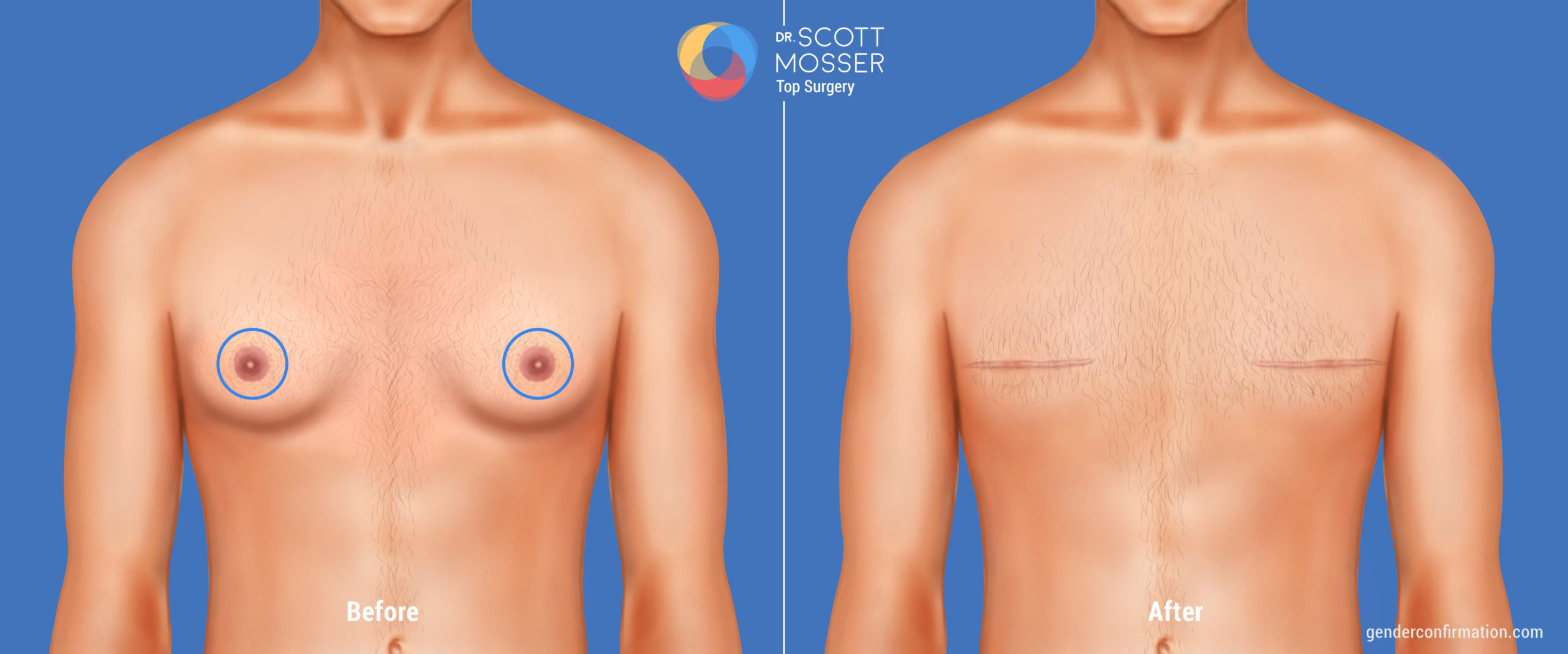
Areola Excision example
Chest Tissue Amount and Chest Contour
A conventionally masculine chest has a fairly uniform requirement for a chest contour. There should be a uniform thickness of tissue throughout the entire chest area, matching the surrounding regions which are beyond the area of surgery. Meaning:
- After a successful procedure, one should be able to pinch the tissue of the chest anywhere and have it be more or less the same thickness. This is a degree of thickness that not only will be in balance at the conclusion of surgery, but will likely serve the patient well in the future
- If the patient loses weight and gains muscle bulk, then just like anyone they would have a much more muscular defined chest
- If the patient gained weight, they would likely gain weight on their chest like they would gain weight elsewhere in their abdomen
- A conventionally “male” outcome controls the excess tissue that is present in the outer chest beneath the armpit and also in the upper outer front part of the chest. This is just next to the armpit on the front of the chest where there can be a small amount of puffy chest tissue that needs to be removed
Other Chest Contour Options
This may be one of the areas where there is the highest degree of variation among different procedure types. For example, with the Inverted T and Buttonhole procedure:
- This procedure may result in a considerable degree of left over chest tissue. A patient deciding on these procedures would need to be prepared to have a chest that is similar to the appearance one would have with gynecomastia. In some cases, the patient might have a chest that looks like they have relatively small breasts
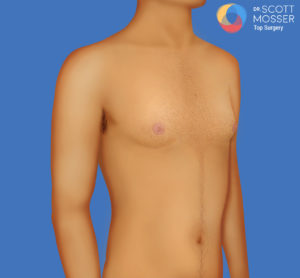
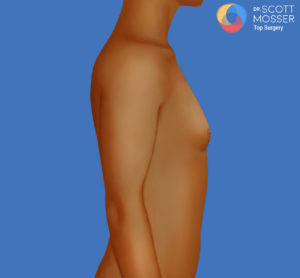
Degrees of fullness, mildly full, examples
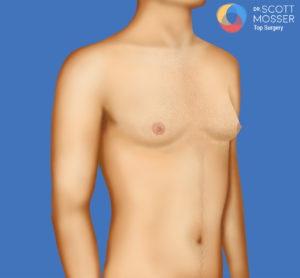
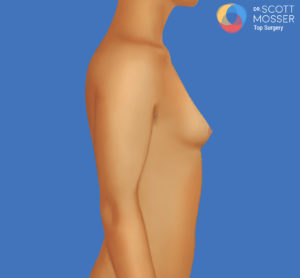
Degrees of fullness, moderately full, examples
- It’s important to note that the Double Incision procedure can also be performed in a way to maintain more than average tissue on the chest, and is more controllable than the inverted T/buttonhole procedures
In cases where a patient has a particular wish regarding the exact amount of chest tissue to be left over, we advise them to bring in photos of bodies that have the amount of chest tissue that they would be hoping to have at the conclusion of surgery. This helps to avoid any misunderstandings regarding what the procedures can offer and what the limitations of each procedure type are for a given body type are.
In Conclusion
Depending on the level of customization you are interested in to achieve a result that feels/appears most affirming to you, here’s additional content on nipple and areola options.
To learn more about our surgeons’ approaches to non-binary surgery, check out the video below of Dr. Mosser’s talk at the Philadelphia Trans Wellness Conference in 2019. This video covers how our practice is helping gender-expansive people achieve their gender-affirming surgery goals.
Request a Free Surgical Consultation Today.
All virtual and in-person consultations with our board-certified surgeons are free. Once you fill out this form, our patient care team will reach out and guide you through every step to get to surgery.


